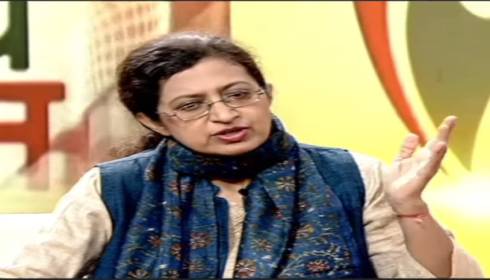
Delhi-AIIMS, IIT-D develop AI-based app for dyslexic children
 Rohit Shishodia
Rohit Shishodia
The Department of Paediatrics of Delhi-AIIMS in association with IIT-Delhi has developed a web application for artificial intelligence (AI) based remedial intervention program for dyslexic children.
The app will assist children living with dyslexia to read, write and learn. The parents of dyslexic children will be informed and trained about the functioning of the app. After getting familiarised with the app, the parents will further teach their children to enable them to overcome various problems they face during reading out and learning.
Dyslexia is a learning disorder that involves difficulty reading due to problems identifying speech sounds and learning how they relate to letters and words (decoding).
While speaking to DTMT about the initiative, Dr Shefali Gulati, Professor, Department of Child Neurology at AIIMS said that this app consists of eight modules covering different aspects of learning languages which will help children to read, write and explain like normal children through artificial intelligence.
As part of a study conducted by AIIMS, a total of 44 dyslexic children who underwent functional magnetic resonance imaging (F-MRI) while using this app, it was found that the majority of the children learned languages and words just like normal kids, Dr Gulati elaborated.
People with dyslexia have normal intelligence and usually have normal vision. Most children with dyslexia can succeed in school with tutoring or a specialized education program. Emotional support also plays an important role.
Though there's no cure for dyslexia, early assessment and intervention result in the best outcome. Sometimes dyslexia goes undiagnosed for years and isn't recognized until adulthood, but it's never too late to seek help.
Signs of dyslexia can be difficult to recognize before your child enters school, but some early clues may indicate a problem. Once your child reaches school age, your child's teacher may be the first to notice a problem. Severity varies, but the condition often becomes apparent as a child starts learning to read.
Though most children are ready to learn reading by kindergarten or first grade, children with dyslexia often can't grasp the basics of reading by that time. Talk with your doctor if your child's reading level is below what's expected for his or her age or if you notice other signs of dyslexia.
When dyslexia goes undiagnosed and untreated, childhood reading difficulties continue into adulthood.
Dyslexia tends to run in families. It appears to be linked to certain genes that affect how the brain processes reading and language, as well as risk factors in the environment.
Children who have dyslexia are at increased risk of having attention-deficit/hyperactivity disorder (ADHD), and vice versa. ADHD can cause difficulty sustaining attention as well as hyperactivity and impulsive behavior, which can make dyslexia harder to treat.
According to AIIMS, one out of five children suffers poor scholastic performance. The poor scholastic performance is a subtle indicator of brain health problem and red flag for parents, teachers, and pediatricians.
These apparently normal children may have some invisible brain health issues like specific learning disorders (Dyslexia), hyperactivity and attention deficit (ADHD), vision and hearing issues or these may be children with special needs. Many a time a perfectly healthy brain is not able to perform optimally because of non-medical issues like excessive screen time, bullying or negative psychological environment.
Poor scholastic performance ensues a vicious cycle of stress, poor result and stress. It often leads to other behavior problems in children. Most of the causes of poor performances can be prevented and treated if parents and teachers are aware of these issues.